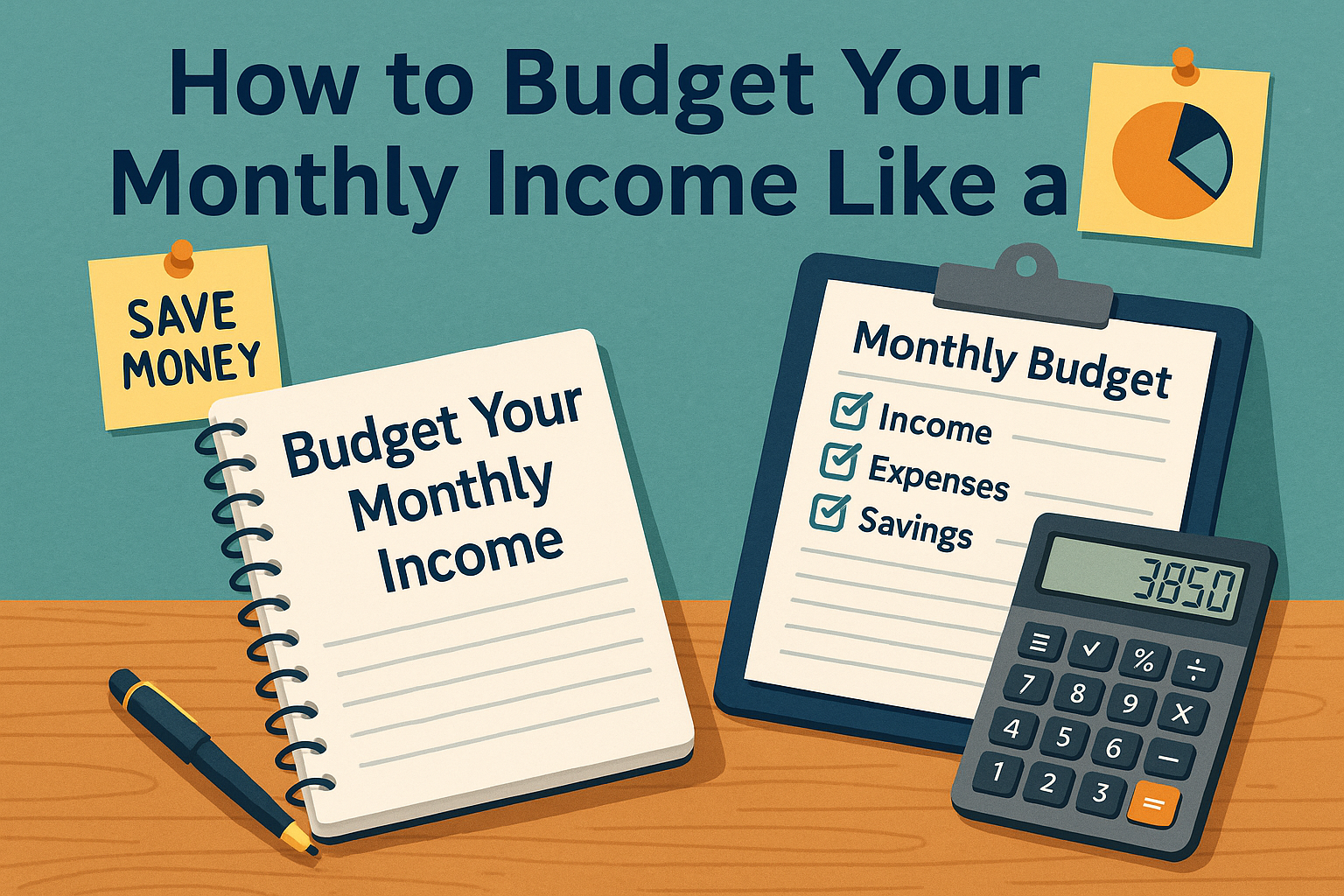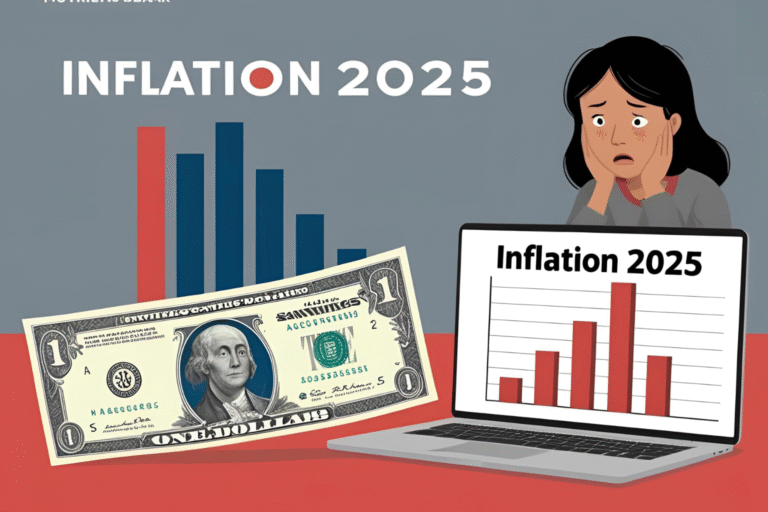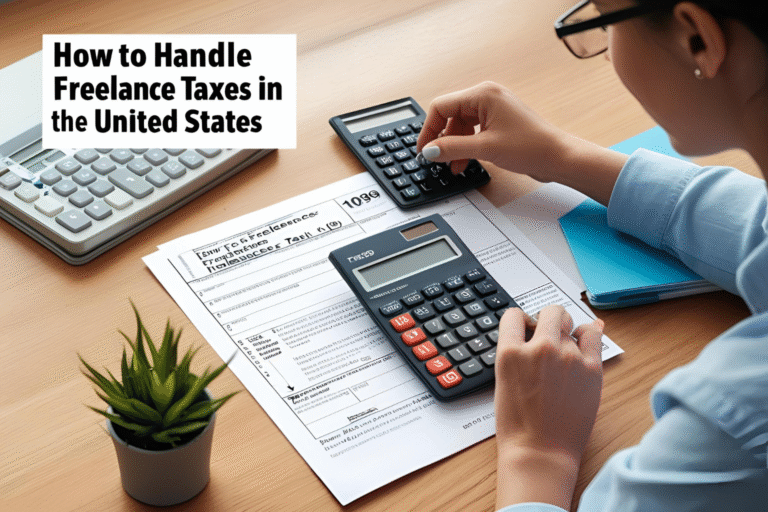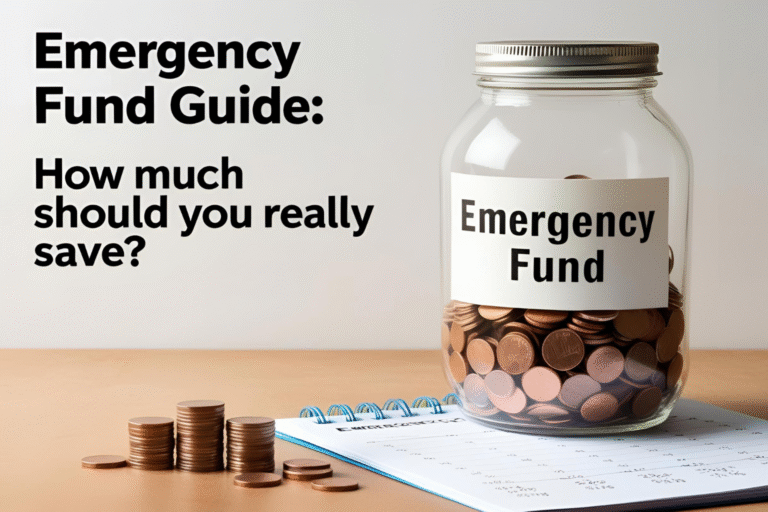How to Budget Your Monthly Income Like a Pro
Budgeting is one of the most powerful tools for financial success, yet many people in the U.S. live paycheck to paycheck without a clear plan. In this article, we’ll show you how to budget your monthly income like a pro—so you can save more, spend smarter, and achieve your financial goals.
1. Know Your Total Monthly Income
Start by identifying your net income—the money you actually take home after taxes and deductions. If you have multiple income sources (such as side gigs, freelance jobs, or rental income), include those too.
Example: If your monthly salary is $4,000 after tax and you earn $500 from freelance writing, your total monthly income is $4,500.
2. Track All Your Monthly Expenses
To manage your money wisely, you need to know where it goes. Break your spending into these categories:
- Fixed expenses: Rent, mortgage, insurance, car payments.
- Variable expenses: Groceries, fuel, electricity.
- Discretionary: Dining out, entertainment, subscriptions.
- Irregular: Gifts, medical bills, annual fees.
Use apps like Mint or You Need a Budget (YNAB) to make this process easy.
3. Choose a Budgeting Method That Works for You
There’s no one-size-fits-all approach. Pick a budgeting strategy that fits your lifestyle:
- 50/30/20 Rule: Allocate 50% of income to needs, 30% to wants, and 20% to savings/debt repayment.
- Zero-Based Budgeting: Every dollar is assigned a job, so your income minus expenses equals zero.
- Envelope System: Use physical or digital envelopes to allocate cash for each category.
4. Set Clear Financial Goals
Whether you’re saving for a house down payment, paying off student loans, or building an emergency fund, set SMART goals (Specific, Measurable, Achievable, Relevant, Time-bound). This keeps you motivated and focused.
5. Automate and Adjust Your Budget Regularly
Automate transfers to your savings account or investments right after you get paid. Set reminders to review your budget every month and adjust based on any income changes, unexpected expenses, or new goals.
6. Build a Cushion with an Emergency Fund
Aim to save 3–6 months of living expenses in a separate high-yield savings account. This protects you against job loss, medical emergencies, or major repairs.
7. Use Budgeting Tools and Apps
Popular U.S.-based tools that make budgeting easier:
- Mint (Free)
- YNAB (You Need A Budget)
- Personal Capital
- Goodbudget
These apps sync with your bank and credit cards, providing real-time tracking and analysis.
Final Thoughts
Creating a monthly budget doesn’t mean cutting out all fun—it means being intentional with your money. When you know exactly where your income is going, you gain the power to make better decisions, avoid debt, and build lasting wealth.
FAQs
What is the best budgeting method for beginners?
The 50/30/20 rule is simple and effective for beginners. It’s easy to follow and provides clear structure.
How much should I save from my monthly income?
Aim to save at least 20%, if possible. Start small and increase gradually as your income grows.
Should I include credit card payments in my budget?
Yes, all debt payments—including credit cards—should be part of your monthly budget plan.
Is it better to budget weekly or monthly?
Monthly budgeting aligns with most pay schedules and recurring bills, but weekly tracking can add precision.
Can I still budget if my income is irregular?
Yes, use an average income estimate based on past months and prioritize essential expenses first.






